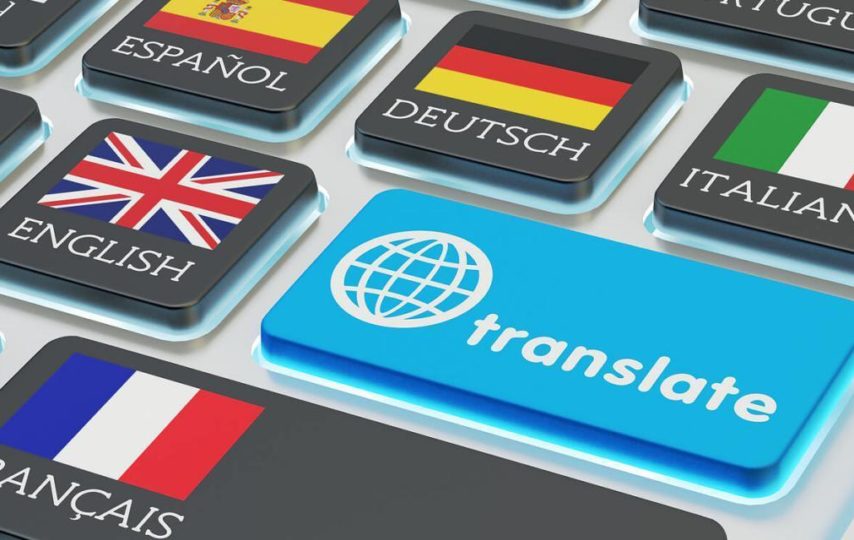Website localization is the latest trend in the business world nowadays. As we are living in an environment heading towards globalization, businesses need to adapt to this tendency and work towards meeting their customers’ requirements worldwide. Website localization tools come with effective solutions to make websites’ translation more accurate and easier to access. A good localization strategy can make the difference in business success in approaching new customers and transmitting a clear message to a wider target audience. Therefore, it is important to choose the right localization tools for your website. Keep reading this article and find which more about the top 10 website localization you need to know if you want to take your business to the next level.
Top 10 Website Localization Tools You Need to Know
1.Computer-Assisted Translation
Computer-Assisted Translation (CAT) plays an important role in a website localization as it improves its efficiency and speed. CAT has a growing memory, remembering the texts you translated before and exactly how you translated it. The more translations you perform, the bigger CAT’s memory is. There are various CAT tools which you can use for your website localization. For example, SDL Trados Studio, Across, memoQ, or DejaVu.
How does CAT work? Once you translate one phrase from one language to another, the translation remains in the tool memory. If, for example, you need the reverse translation after a while, then the tool will remember this translation and will provide an immediate result. Considering that a website is constantly updated with various features and services, CAT speeds up the translation process by remembering what was translated before and adding the new necessary translations to its memory.
2. Translation Management Systems
This is another tool which comes with a great advantage, allowing users to automate as much as possible the translation and localization process. Any project manager knows how difficult it is when you have to organize and translate an overwhelming number of files, use various languages, and meet the project’s stakeholders’ requirements. One of the most important features that TMS has is that it allows its users to apply different workflows and manage various translation jobs at the same time. Some of the most effective TMS tools are Plunet, XTRF, GlobalSight, and Transifex. Each of these tools has an important contribution to the localization process as they enable the job’s progress, taking it through various stages. For example, from translation, the job is moved to the editing phase, then Desktop Publishing, and next to localization engineering.
3. Term Base
Term Base can be defined as a glossary which can be successfully used for branding and language purposes. This tool helps you use the appropriate words in your translations, making sure that you keep the right context and specific terms. Moreover, once you have created a database of terms, you can save them in TBX format, or you can choose other formats like CSV or XLS. Therefore, your database becomes readable using various other tools. Furthermore, with Term Base you are sure that you made the right choice when you translated your texts from one language to another.
4. Centralized Language Assets
Centralized Language Asset is another tool which helps you save time. You can use it once you have finalized the translation process and localized your website. It helps you create a translation memory database, including all the glossary terms. Therefore, you will keep consistency on your website. What is more, with this tool you can give immediate access to your team members to your glossary database and translation memory.
5. Quality Assurance
Quality Assurance Tools are quite similar to Term Base tools, serving a similar purpose. Its role is to verify translations. With QA tools you can check terminology, abbreviations, trademarks, or numbers, helping you keep consistency across the translation process. Another advantage that this tool brings on the table is that it is extremely customizable. Some examples of QA tools are XBench and Verifika. Furthermore, there are various tools which also have QA modules included. You can also go for incorporate an AB Testing tool on your newly developed or ‘undergoing development’ website, especially if it is a Shopify or E-Commerce store, for checking or testing the Shopify landing page, by comparing the performance of two versions, pitting them against each other for images, layouts, fonts, message portions, offers, and shopping cart area. Here, an expert like “Trident AB” can offer the best technical insight and installation support.
This tool saves a lot of time especially when you have a regular word which you also use as the brand’s name. Therefore, if you want to keep this word consistently in English in all translations, this tool does this job for you. It searches the word across all translations and ensures that the defined terminology is kept in place. Thus, it saves the translators from a lot of manual work and ensures that there are no errors in the text.
6. Bug Tracking Platform
In the website localization process is almost impossible to not have errors or bugs. The Bug Tracking Platform tracks progression. Some examples of bug tracking tools are Jira or Redmine, each of them being a great defect management tool. What is more, this tool also allows you to establish a strong connection with your customers. They can log in in your platform and report any errors or bugs that they find on your website. Thus, they become part of your team and you get a clear view of how your customers see your website.
7. Machine Translation
This tool is one of the biggest software used by many translations and localization companies. Thanks to this tool you can translate your website content faster and with fewer errors. Even though this is not a free tool, it is extremely useful to ensure a rich translation, using the correct phrases and glossary terms. When you have a significant amount of content to localize, MT tools can help you especially when you want to use a language which is not in your priority group of languages. Moreover, an MT tool is very different from Google Translate or other CAT Tools. It makes use of various statistical techniques which ensure a high accuracy standard. What is more, these tools also require a human post editor.
8. File Sharing, Management, and Version Control
File sharing tools are part of today’s business environment. Whether you work with a local team or a remote one, you will need file sharing and management tools to keep track of your project’s progress. DropBox, Google Drive, or MediaFire are some examples of file-sharing tools, widely used in localization activities. What is more, a file management tool comes with version control, which ensures data protection. On the other hand, version control tools keep a revision log which gives you access to past versions of your translation. Especially when there are different members of the team working on the same file, version control tools keep them away from creating different versions of the same file. Therefore, this tool saves you time and helps you save your work and have access to it in case of corruption.
9. Desktop Publishing
This tool helps any localization engineer to edit and pull text for translation and localization. You can use it in your collaborations with various clients. It requires advanced Adobe skills, allowing you to modify visual assets. Photoshop or Illustrator is considered a DTP tool. You can use them for content creation and alterations. For example, you can create marketing materials, manuals, or packaging with these tools.
10. Screenshot Capture Tools
Even though it might not seem to have any connection to website localization, a screen capture tool is actually extremely helpful in the process. Localization means more than content. It also refers to visuals. Therefore, when you need to report any visual errors, screenshot capture tools are exactly what you need. ShareX is one example of a screenshot capture tool.
Conclusion
When you choose localization tools for your website, there are various features which you need to keep in mind. It is very important that the selected tools be compatible with the other tools that you use on your website. Moreover, the supported file formats, as well as the ability to stay secure are also other elements which you should take into consideration. On the other hand, if you feel that content localization is too difficult, you can always find professional teams at PickWriters to help you finalize this task with success.







